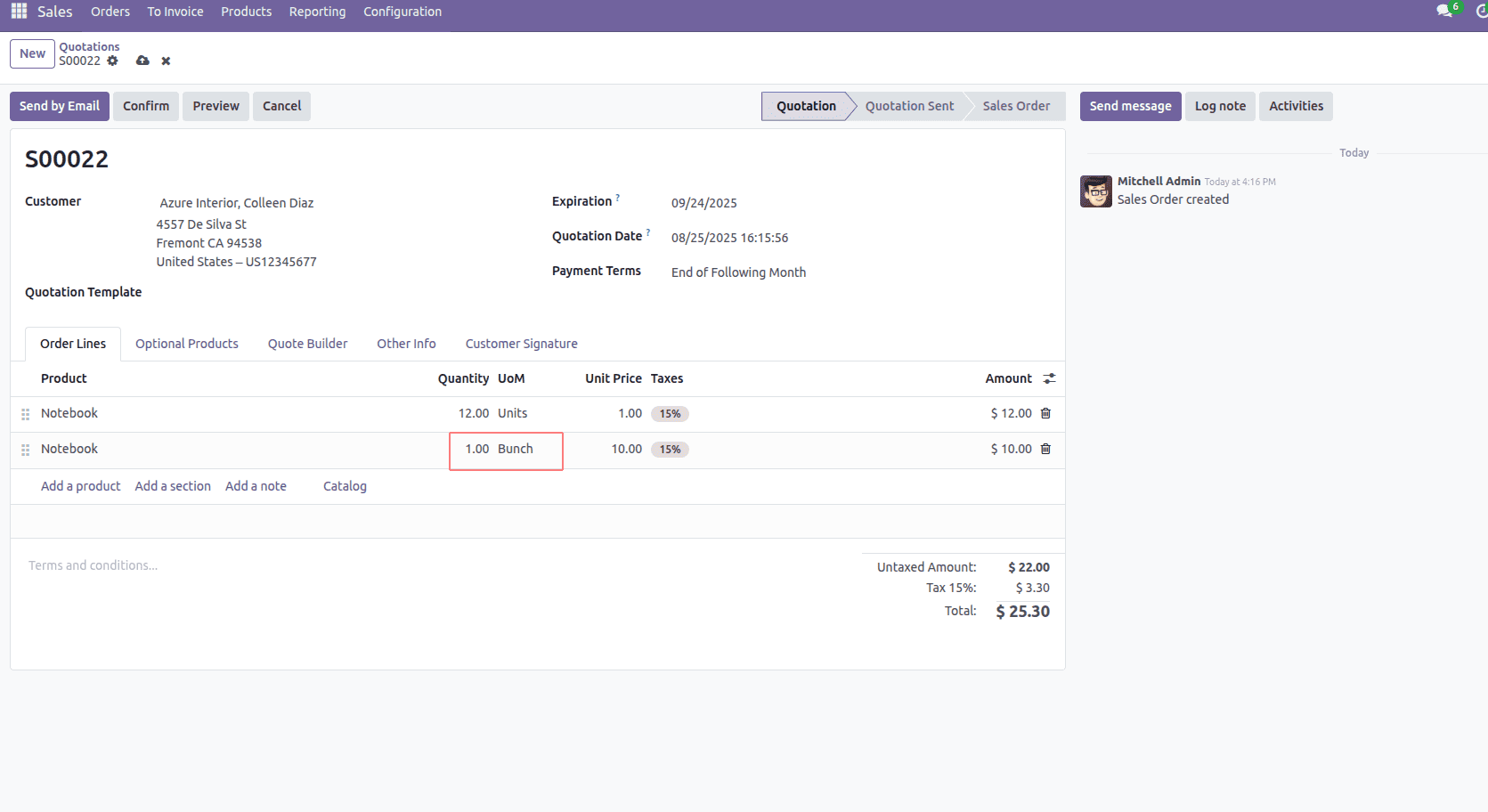Odoo 18 makes managing products in multiple units of measure simple and efficient, helping businesses maintain accurate inventory and smooth operations. With its intuitive interface, your team can easily select the right unit of measure for each sale or purchase, without needing extra training. The system automatically converts quantities to the base unit using predefined conversion rates, reducing errors and speeding up order processing. By correctly setting up products and conversion factors, you can streamline your workflow, improve accuracy, and make smarter, data-driven decisions for your business.
Let’s take a look at how to set up units of measure in Odoo 18.
The first step is to activate the units of measure option in the Sales module:
Sales > Settings > Units of Measure

Once enabled, a new menu called “Units of Measurement Categories” will appear under the Configuration tab. Alternatively, you can access it directly using the link provided next to the boolean option.

By clicking the New button to create a UoM category, you can define and manage the units of measure for both sales and purchase operations of your products.

First, define the base unit of measure for your product, which will act as the standard for inventory tracking and pricing. For instance, if you sell items individually, your base unit could be “Unit(s)”.
Next, lets add additional units in this unit of measure

To add alternative units, click “Add a Line”. For each new unit, enter a conversion factor that shows how it relates to the base unit. For example, if you sell in dozens, the conversion factor would be 12.
In our example, we introduced “Bunch” as a new unit. It’s classified as larger than the base unit with a ratio of 10, meaning one Bunch equals ten individual units of the reference measure.
Next, let’s explore how to sell and purchase products using different units of measure. To get started, we first need to assign the appropriate UoM to a product.

Now, let’s see how this works in sales.

When creating a sales order, you can update the default sales UoM by selecting the desired option from the dropdown. In this example, we selected Bunch as the UoM, with a price of $1 per unit. This shows how easily you can sell products in different units of measure. Once the details are finalized, click Confirm Order to proceed.
When buying products in different units of measure, the process is the same.

Similarly, when creating a purchase order, you can choose the appropriate UoM—such as Bunch or Dozen—from the dropdown. Here too, the unit price is applied based on the base unit, ensuring accurate calculations. After reviewing the order details, click Confirm Order to complete the purchase.
Using different units of measure in Odoo 18 makes managing sales, purchases, and inventory much easier. By setting up products with the right UoM and conversion rates, you can reduce mistakes, speed up order processing, and keep your stock accurate. It’s a simple feature that can make a big difference to your business
To read more about How to Manage Product Sales in Various Units of Measure in Odoo 18, refer to our blog How to Manage Product Sales in Various Units of Measure in Odoo 18.